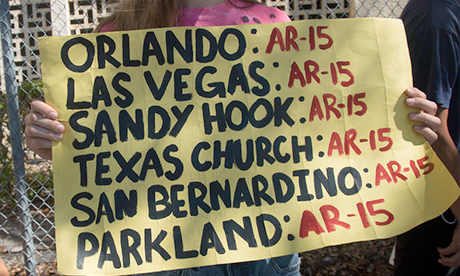Contrary to what you may sometimes hear, school shootings are not unique to the United States.
Germany, for instance, went through a string of devastating attacks between 2002 and 2009.
Between 1996 and 2008, major school shootings also occurred in Finland and Scotland, among other places.
But in Europe, there hasn’t been a major high-casualty gun attack on a campus in almost a decade.
Meanwhile, Wednesday’s shooting in Florida was at least the sixth of its kind in the United States this year — 45 days into 2018.
There is widespread consensus in Europe and abroad that some school shootings are impossible to prevent, but the numbers still speak a clear language: There are some things countries can do, and Europe appears to have learned from uncomfortable lessons.
The most frequently cited reason for why mass shootings — not necessarily in schools — are more frequent in some countries than in others is the prevalence of handguns.
In his famous study, “Public Mass Shooters and Firearms: A Cross-National Study of 171 Countries,” University of Alabama criminology professor Adam Lankford found a link between the number of guns and mass shootings that killed four or more people.
The data set ranged from 1966 through 2012.
The study indicated that a decrease in the number of weapons also would probably result in a decrease in shootings.
That’s exactly what happened in Australia after the country tightened gun legislation following a mass shooting in 1996.
It would also explain why countries where gun ownership is rare, such as France or Britain, have largely been spared such catastrophic incidents.
Apart from arguing that Lankford’s overall data set is misleading because it doesn’t take into account politically motivated violence, critics also questioned whether the number of weapons is really the most significant factor.
They point to one nation in particular: Switzerland.
Switzerland has one of the world’s highest ratios of firearms per person, with an estimated 45.7 guns per 100 residents, according to the Small Arms Survey.
Only two countries have a higher ratio: Yemen, with 54.8 guns per 100 residents, and the United States, with 88.8 guns per 100 residents.
Other studies have even indicated the share of households with weapons may almost be the same in Switzerland as it is in the United States.
Those statistics have big margins of error, but they still point to a legitimate question: Why has there never been a school shooting in Switzerland, despite the Swiss enthusiasm for weapons? Continue reading
- Image: Huffington Post
- Note: In the USA 18 year olds can buy an AR15, but not buy a beer.
